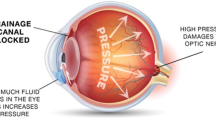Abstract
Hyperaemia is an excess of blood in a tissue that causes the appearance of an unusual red hue in the affected area. It is a common occurrence in the bulbar conjunctiva, where it can be related to multiple pathologies, such as conjunctivitis or dry eye syndrome. Specialists grade hyperaemia by means of a tedious, subjective, non-repeatable and time-consuming process. These drawbacks can be solved with the automatisation of the process by means of image processing techniques. The automatic segmentation of the conjunctiva is an important part of the process, as it ensures the absence of noise in posterior stages of the methodology. However, there are several issues of illumination and focus in the input videos that difficult the process. In this work, several segmentation algorithms are proposed and compared in order to obtain an accurate location of the bulbar conjunctiva.














Similar content being viewed by others
References
Barnard K, Cardei V (2002) A comparison of computational color constancy algorithms. I: methodology and experiments with synthesized data. IEEE Trans Image Process 11(9):972–984
Bouthemy P, Rivero JS (1987) A hierarchical likelihood approach for region segmentation according to motion-based criteria. In: Proc. 1st international conference on computer vision, London, UK, pp 463–467
Bradski G (2000) Opencv library. Dr. Dobb’s J Softw Tools
Brea MLS, Barreira N, González AM, Pena-Verdeal H, Yebra-Pimentel E (2016) Comparing machine learning techniques in a hyperemia grading framework. ICAART 2:423–429
Deng G, Cahill L (1993) An adaptive gaussian filter for noise reduction and edge detection. In: IEEE conference record nuclear science symposium and medical imaging conference 1993, pp. 1615–1619. IEEE
Finlayson GD, Drew MS, Funt BV (1994) Color constancy: generalized diagonal transforms suffice. JOSA A 11(11):3011–3019
Funt B, Barnard K, Martin L (1998) Is machine colour constancy good enough?. In: Computer vision ECCV’98, pp. 445–459
Horowitz SL, Pavlidis T (1976) Picture segmentation by a tree traversal algorithm. J ACM (JACM) 23(2):368–388
Joshi N, Shah C, Kaul K (2012) A novel approach implementation of eyelid detection in biometric applications. In: Nirma university international conference on engineering (NUiCONE), 2012, pp. 1–6. IEEE
Min TH, Park RH (2009) Eyelid and eyelash detection method in the normalized iris image using the parabolic hough model and Otsu’s thresholding method. Pattern Recognit Lett 30(12):1138–1143
Mirza D, Taj I, Khalid A, et al. (2009) A robust eyelid and eyelash removal method and a local binarization based feature extraction technique for iris recognition system. In: IEEE 13th international multitopic conference. INMIC 2009, pp. 1–6. IEEE
Ramos L, Barreira N, Pena-Verdeal H, Giráldez M, Yebra-Pimentel E (2015) Computational approach for tear film assessment based on break-up dynamics. Biosyst Eng 138:90–103
Remeseiro B, Oliver KM, Tomlinson A, Martin E, Barreira N, Mosquera A (2015) Automatic grading system for human tear films. Pattern Anal Appl 18(3):677–694
Rizzi A, Gatta C, Marini D (2002) Color correction between gray world and white patch. In: International society for optics and photonics electronic imaging 2002, pp. 367–375.
Rodriguez JD, Johnston PR, Ousler GW III, Smith LM, Abelson MB (2013) Automated grading system for evaluation of ocular redness associated with dry eye. Clin Ophthalmol (Auckland, NZ) 7:1197
Sánchez L, Barreira N, García-Resúa C, Yebra-Pimentel E (2015) Automatic selection of video frames for hyperemia grading. Eurocast 2015:165–166
Sánchez Brea ML, Barreira Rodríguez N, Sánchez Maroño N, Mosquera González A, García-Resúa C, Giráldez Fernández MJ (2016) On the development of conjunctival hyperemia computer-assisted diagnosis tools. Artif Intell Med 71(C):30–42
Stanković RS, Falkowski BJ (2003) The haar wavelet transform: its status and achievements. Comput Electr Eng 29(1):25–44
Suzuki S et al (1985) Topological structural analysis of digitized binary images by border following. Comput Vis Gr Image Process 30(1):32–46
MathWorks The, Inc., MATLAB Release (2014) Natick. Massachusetts, United States
Tomasi C, Manduchi R (1998) Bilateral filtering for gray and color images. In: IEEE sixth international conference on computer vision, 1998, pp. 839–846.
Van De Weijer J, Gevers T (2005) Color constancy based on the grey-edge hypothesis. In: IEEE international conference on image processing 2005. ICIP 2005. vol. 2, pp. II–722. IEEE
Van De Weijer J, Gevers T, Gijsenij A (2007) Edge-based color constancy. IEEE Trans Image Process 16(9):2207–2214
Wang Z, Zhang D (1999) Progressive switching median filter for the removal of impulse noise from highly corrupted images. IEEE Trans Circuits and Syst II: Analog and Digit Signal Process 46(1):78–80
Wu X (1993) Adaptive split-and-merge segmentation based on piecewise least-square approximation. IEEE Trans Pattern Anal Mach Intell 15(8):808–815
Yoneda T, Sumi T, Takahashi A, Hoshikawa Y, Kobayashi M, Fukushima A (2012) Automated hyperemia analysis software: reliability and reproducibility in healthy subjects. Jpn J Ophthalmol 56(1):1–7
Author information
Authors and Affiliations
Corresponding author
Ethics declarations
Conflict of interest
The authors declare that they have no competing interests.
Rights and permissions
About this article
Cite this article
Sánchez Brea, L., Barreira Rodríguez, N., Mosquera González, A. et al. Precise segmentation of the bulbar conjunctiva for hyperaemia images. Pattern Anal Applic 21, 563–577 (2018). https://doi.org/10.1007/s10044-017-0658-z
Received:
Accepted:
Published:
Issue Date:
DOI: https://doi.org/10.1007/s10044-017-0658-z




